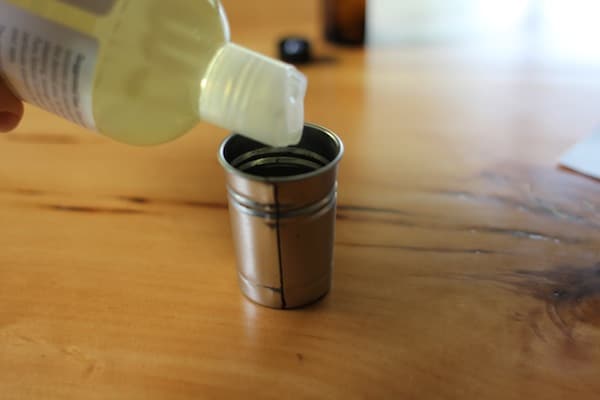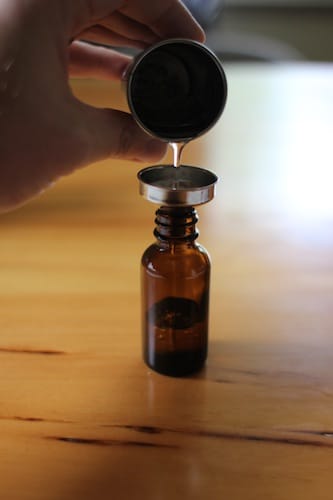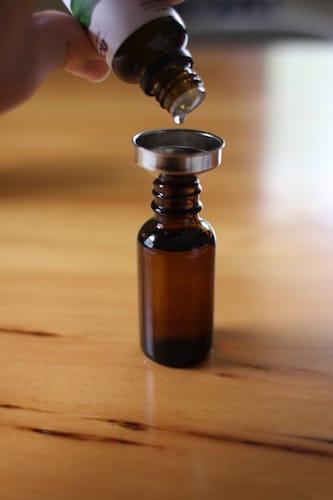
“Hey Fred, your beard is looking a little scraggly. Have you tried rubbing some beard oil in it? It’ll change your life, brother.”
Just like the mop on top of your head needs to be taken care of, so does the mop on the lower half of your face. This involves regular shampooing, trimming, combing…and an oft-forgotten step: oiling. Beard oil offers a variety of benefits for an unshaven man: it moisturizes the often dry skin underneath, it tames beard frazzle, and it just smells nice.
I’m a recent convert to beard oil, and now I won’t turn back. While I’d seen it on plenty of men’s websites and even in retail shops, I hadn’t ever even tried it before finding some at a farmer’s market and testing it out. I was immediately entranced by the smell, and was hooked by the softness of my beard and the health of my skin underneath it. While I loved the product, it was expensive — as most beard oil is. You’re looking at paying between $10-$20 for a 1-2 oz. bottle (you only use a few drops at a time). While that amount will last awhile, I figured there had to be a way to make it on my own a little more cost effectively. And don’t ya know it, there is! Follow the simple steps below, and you’ll be on your way to having a soft beard that shines and doesn’t itch — a miracle I say!
Ingredients

- 1oz bottles
- Mini measuring cup or shot glass
- Small funnel
- Carrier oils (more on that below) — I used jojoba, sweet almond, and coconut oil
- Essential oils — I used tea tree, peppermint, cinnamon cassia, and orange
The carrier oils and essential oils were bought at my local GNC. Be warned, they aren’t cheap ingredients, but they’ll last a really long time. The essential oils were $5-$10 each and the carrier oils were each about $10 (even though the jojoba oil was 4oz and the sweet almond was 16oz — keep that cost difference in mind when making your own recipes). So while startup costs are higher, your per-bottle cost ends up being just $2-$3 using the recipes below. (Keep this in mind when thinking about Christmas presents for your bearded friends and relatives!)
A Primer On Carrier and Essential Oils

Carrier oils will make up the bulk of your beard oil recipes. They’re a base oil that carries the more potent essential oils and dilutes them to make them more palatable for your skin. When not diluted, essential oils can actually cause irritation and burning. There are a variety of carrier oils out there that provide different benefits, and most have just a faint scent (unlike the potent essential oils). My choices for carrier oils — jojoba, sweet almond, and coconut — were chosen mostly on availability, but they’re also the ones that are most common in beard oil recipes.
A few carrier oils and their benefits:
- Jojoba – is similar to your natural human oils and is easily absorbed by your skin
- Argan – makes skin softer and protects against signs of aging like wrinkles
- Sweet almond – keeps inflammation at bay, which particularly helps prevent in-grown hairs
- Coconut – one of the best natural moisturizing and hydrating products on the planet, great for dry environments
- Hazelnut – helps prevent acne and eczema
- Hemp seed – another moisturizing oil, helps prevent facial hair from becoming brittle

Essential oils are natural compounds found in seeds, stems, flowers — and almost every other part of a plant. When you squeeze an orange peel or lemon peel, for instance, the fragrant residue left behind contains essential oil. Essential oils are extremely potent to the nostrils and provide scent and additional health benefits to your beard oil. They have been used for thousands of years for their medicinal and therapeutic benefits, a few of which are listed below:
- Cedarwood – helps prevent acne
- Eucalyptus – aids again skin irritation
- Lemongrass – invigorates, like a good aftershave
- Peppermint – invigorates and refreshes the skin
- Amla – repairs damaged hair
Other essential oils are used primarily for their scent: sandalwood, clove, sage, rosewood, tea tree, lime, bay rum, vanilla, etc. All told, there are around 100 essential oils available to consumers.
How to Make Beard Oil
It’s really quite simple to make your own beard oil with these ingredients. All you do is mix the various oils and you’re good to go. The key is to simply experiment with various combos and find what you like best based on scent and desired skin and hair benefits. Follow the basic steps below, then create your own recipes! I provide a few sample recipes, but the options are limited only by your imagination.
1. Start With Carrier Oils

The first ingredients in your recipe are your carrier oils. Basically, mix and match your oils to get about 1oz’s worth (you can always do more or less as desired; I have 1oz bottles, so that’s how much I made). In this first recipe I measured out half an ounce each of jojoba oil and sweet almond oil. You could also simply use a single carrier oil rather than mixing. Again, it’s about scent and the health benefits accrued, as well as what feels best on your skin. Experiment with various combinations of carrier oils to find what you like best.

Use the funnel to pour the oil into the bottle. Easy peasy.
2. Add Essential Oils

After you’ve added your base carrier oils you’ll add drops of essential oils for scent. Your essential oils will come in a bottle with a built-in dripper; remember that they’re potent, so you don’t want to add more than 10 or so drops to each 1oz mixture. For the more powerful scents, 3-5 drops is all you need. You can mix and match essential oils to find the scent that you like best.
3. Mix and Enjoy
Making your own beard oil is that easy! After you’ve added your essential oils, put the cap on, shake it up, and enjoy. To use, simply put a small dab on your fingers (a few drops is all that’s necessary) and rub into your beard. The best time to use is after a shower when you’ve washed your beard and your skin is fresh.
A Note on Using Coconut Oil

Coconut oil, being an excellent moisturizing agent, is often used in beard oils. The coconut oil that you buy in the store is most often in solid form, as it has a high melting point of about 76 degrees F. This can obviously make it difficult to work with. To use coconut oil as a base carrier of your beard oil, you’ll have to first melt it so you can mix with your essential oils. I put a large tablespoon of the solid oil into a dish, then set that dish into another that had hot water. The oil liquified in no time and I was able to mix in a few drops of an essential oil. It will then re-solidify, and you end up with more of a beard balm. You simply rub a little on your fingers, and your body heat will melt it, thereby turning it into oil again, ready to use on your facial hair.
A Few Recipe Ideas
After some experimenting, you’ll quickly find your favorite combos. My favorite scents are definitely peppermint and tea tree. As for carrier oils, I enjoy the coconut because the dry Colorado air dries out my skin. The jojoba is also a great base since it closely mimics the natural oil your body creates. Again, refer to the benefits above of the various carrier oils, and figure out what works best for you. Below are a few of my favorite recipes. The names are my own creation, but feel free to steal them.
Coco-mint
- 1 tablespoon melted coconut oil
- 3 drops peppermint oil
Sweet Mint
- 1/2oz jojoba oil
- 1/2oz sweet almond oil
- 5 drops peppermint oil
- 2 drops tea tree oil
- 2 drops orange oil
Forest Haven
- 3/4oz jojoba oil
- 1/4oz sweet almond oil
- 5 drops tea tree oil
- 3 drops peppermint oil
Fall Face Foliage
- 1/4oz jojoba oil
- 3/4oz sweet almond oil
- 2 drops cinnamon cassia oil
- 2 drops orange oil
- 2 drops tea tree oil
Have you made your own beard oil? What’s your favorite recipe?


